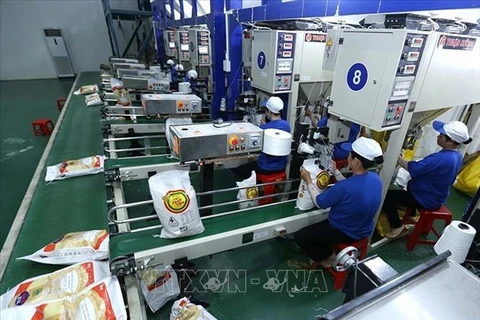
Hanoi (VNA) – The rice trade between Vietnam and the Philippines is forecast to remain steady in the near future, according to the Vietnam Trade Office in the Philippines.
While the Philippine Government is revamping its National Food Authority (NFA) and considering revisions to rice import regulations, these changes are unlikely to have a remarkable immediate impact on Vietnamese exports, the office said.
The NFA restructuring is underway, aiming to equip the agency with the tools to directly intervene in the rice market and stabilise prices. Additionally, lawmakers are contemplating amendments to Republic Act No. 11203 which liberalised rice trade in the Philippines.
These moves stem from rising rice prices in the Southeast Asian nation, which have significantly contributed to inflation. The Government's previous measures, including price ceilings, proved ineffective in curbing the price surge.
The Vietnam Trade Office emphasised that the NFA's market intervention efforts primarily target lower-quality rice consumed by low-income Philippine, and therefore wouldn't disrupt the premium rice market where Vietnamese exporters hold a strong position.
Statistics underscored Vietnam's dominance in the Philippine rice market. In the first five months of this year, Vietnam remained the Philippines' top rice supplier, accounting for over 72% of the country's total import of the grain. This preference results from the popularity of Vietnamese rice varieties like DT8 and 5451, known for their softness and affordability. Vietnamese rice currently reigns supreme in Metro Manila and the southern localities, favoured for its taste and competitive pricing.
Vietnamese rice caters to Philippine preferences with its quality, variety and competitive prices, said Phung Van Thanh, Trade Counsellor of the Vietnam Trade Office in the Philippines. The consistent supply, both in volume and price, aligns perfectly with the Philippines' annual import needs, and geographical proximity also translates to cost-effective transportation.
Beyond these factors, Vietnamese rice enjoys a trade advantage through bilateral and multilateral agreements like the ASEAN Trade in Goods Agreement (ATIGA) and the Regional Comprehensive Economic Partnership (RCEP), which offer benefits not available to non-ASEAN rice exporters like India and Pakistan.
Looking ahead, Thanh advised Vietnamese rice exporters to focus on maintaining their top position in the Philippines. This can be achieved through continued collaboration with the Ministry of Industry and Trade and Vietnamese authorities in the Philippines, such as Embassy and Trade Office, to organise promotion events. He also suggested exploring the potential of medium- and lower-quality rice to cater to a broader range of Philippine consumers./.






















